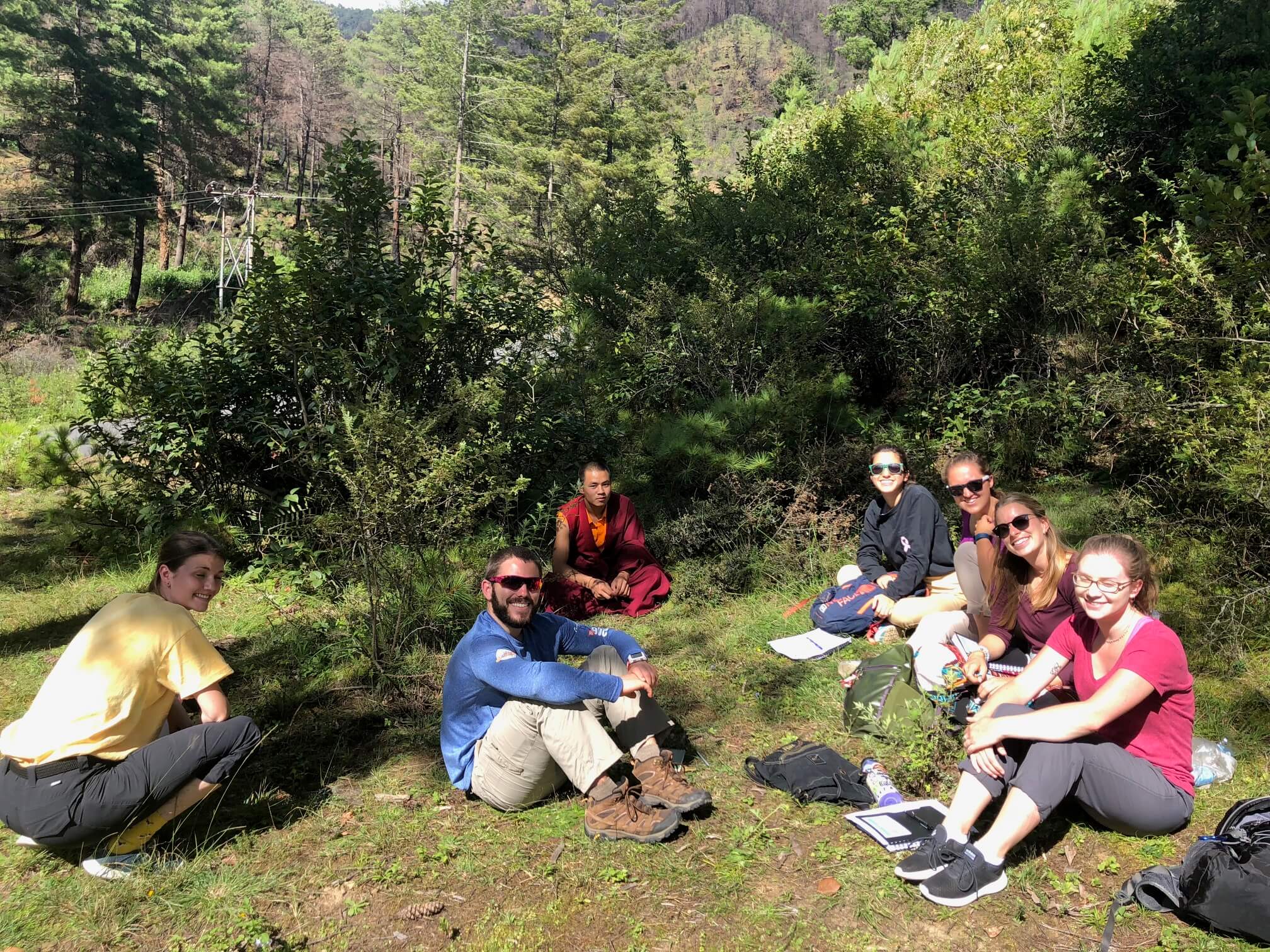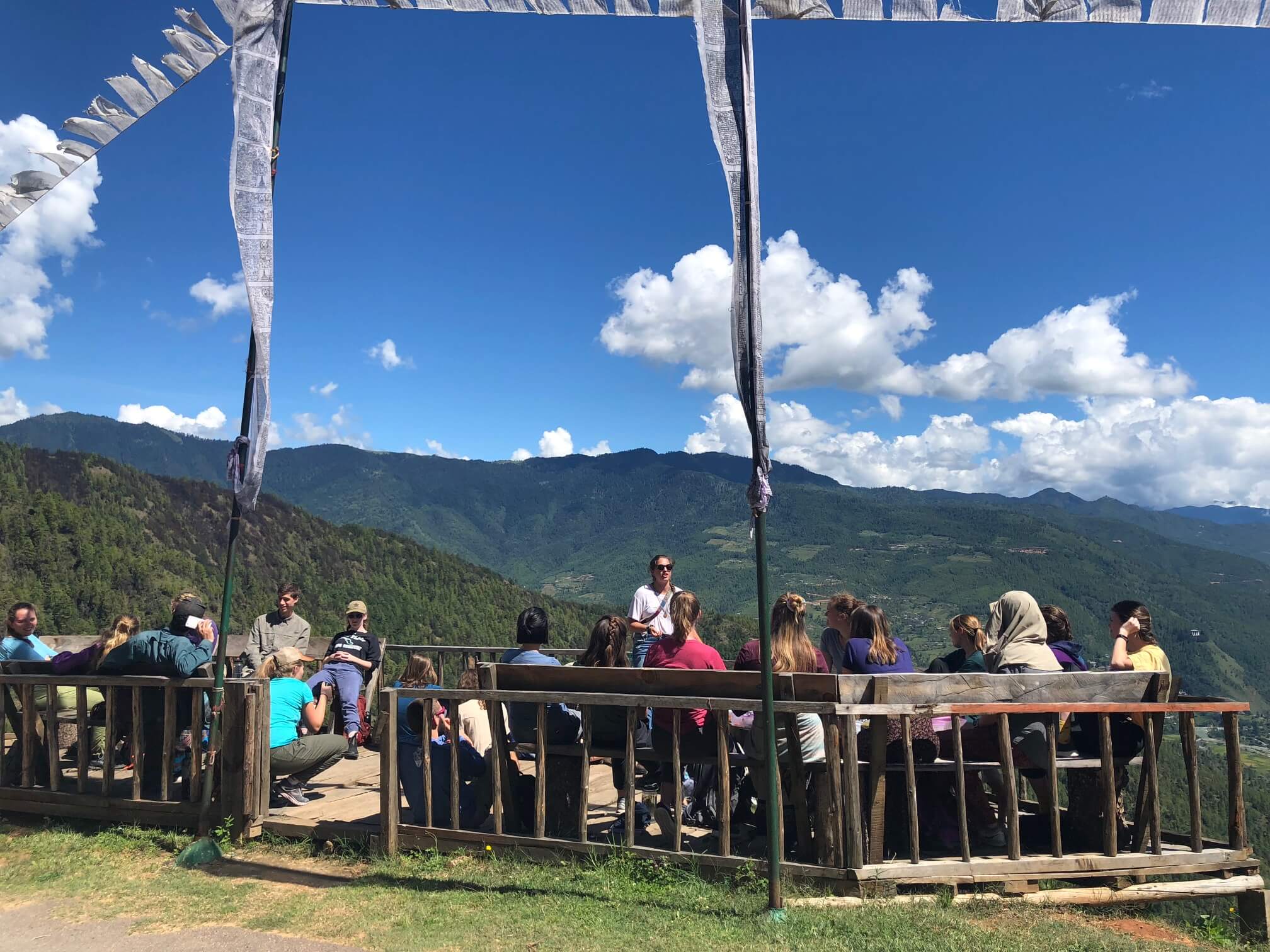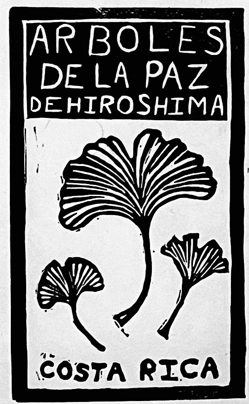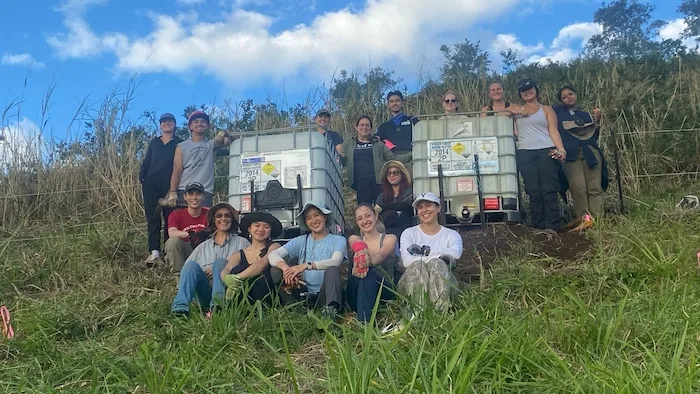Interviewing Monks!
Up and up a winding mountain road we drove to the charming 18th century Sangchhoekhor Monastery. Each bend bringing us glorious bird’s eye views of the valley below, its tucked away airport, and magnificent dzong. If only everyone could see the Paro Valley from here!

Two busloads of students and half a dozen of us, faculty and staff, made the trip to this ancient monastery-turned-Buddhist-college to study the iconography, history, and traditional architecture of the monastery. We were also here to interact with the monastic community and learn about Buddhist values that shape the Bhutanese’ outlook towards nature and conservation; an opportunity for the students to hone their research skills.
The Buddhist concepts of ‘interconnectedness’ and the ‘Middle Path,’ embodied most explicitly in the country’s guiding developmental philosophy – the Gross National Happiness – are key to understanding sustainable and mindful living in Bhutan. The general assumption that the Bhutanese, especially Buddhist monks, actively opt for ‘just enough’ in an age of fast-paced globalized consumerism-driven economies was scrutinized by our students who carried out semi-structured interviews with a group of young monks.
Using interpreters, students asked questions about the environment and development: How often do you use a mobile phone?; Do you think development and modernization are good?; What are your thoughts on nature conservation?; How about climate change? The interactions and cross learning between two groups of people, roughly the same age, but coming from two exceptionally distinct backgrounds, were fascinating to witness. It was also useful for the students to be able to hear firsthand from young Bhutanese about the geneses of their beliefs and the priorities and choices they make for themselves and for their community. Interactions like these highlight the fact that people, even if they come from diverse backgrounds, are more similar than they are different; that the youth in Bhutan and the youth in the US share similar aspirations for a healthy world for future generations.


Related Posts

Trees of Peace from Hiroshima: A Time Traveler and Emissary of Hope

Cinder Cone Chronicles: Lessons from Drought, Data, and Determination
